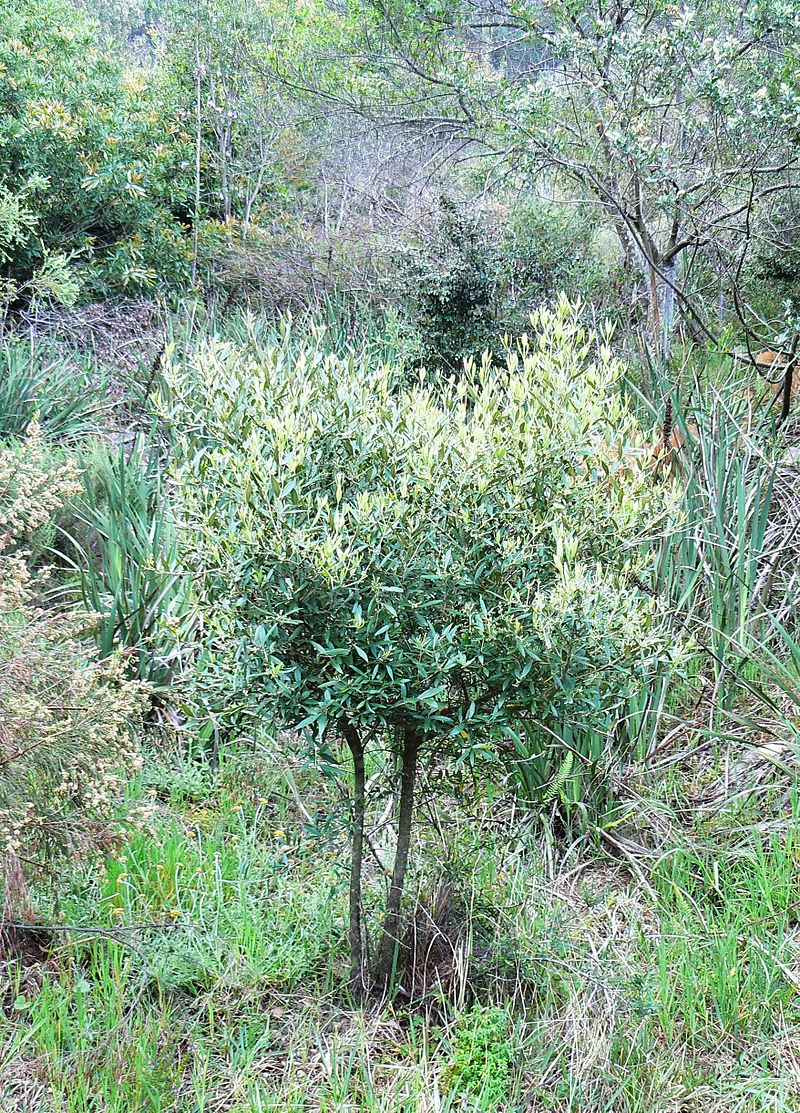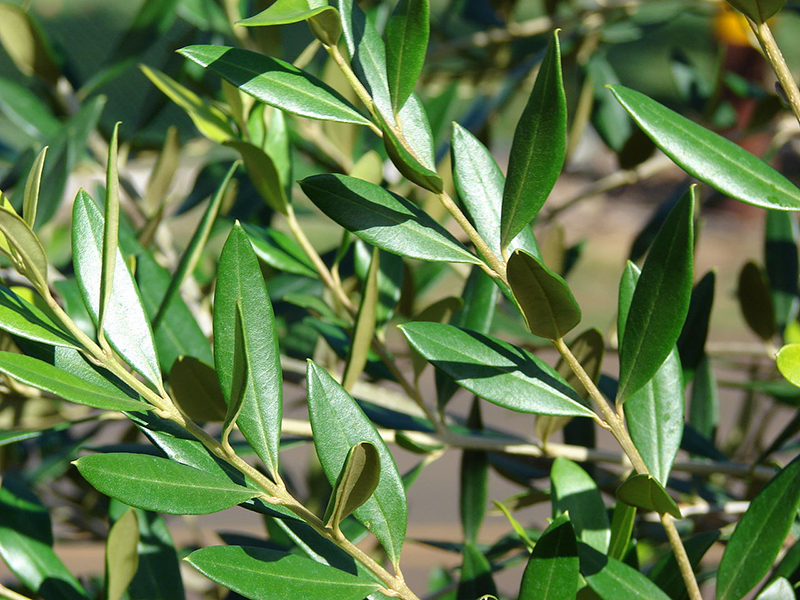Olea europaea
This much-branched evergreen tree varies in size from 2 to 15 m high. The leaves have an opposite, decussate arrangement, and are entire, 3 to 7 cm long and 0.8 to 2.5 cm wide; the apex is acute with a small hook or point, and the base is attenuate to cuneate. Leaf margins are entire and recurved, the upper surface is grey-green and glossy, and the lower surface has a dense covering of silvery, golden or brown scales. Domatia are absent; venation is obvious on the upper surface and obscure on the lower surface; the petiole is up to 10 mm long.
Fruit are borne in panicles or racmes 50 to 60mm long. The calyx is four-lobed, about 1mm long. The corolla is greenish-white or cream; the tube is 1 to 2mm long; lobes are about 3mm long and reflexed at the anthesis. The two stamens are fused near the top of the corolla tube, with bilobed stigma.
The globose to ellipsoid fruit is a drupe, 6mm in diameter and 15 to 25 mm long; it is fleshy, glaucous to a dull shine when ripe, and purple-black. The tree usually flowers in spring.
The wood is much-prized and durable, with a strong smell similar to bay rum, and is used for fine furniture and turnery.
Please contact West Coast Trees for information and availability on Olea europaea.



